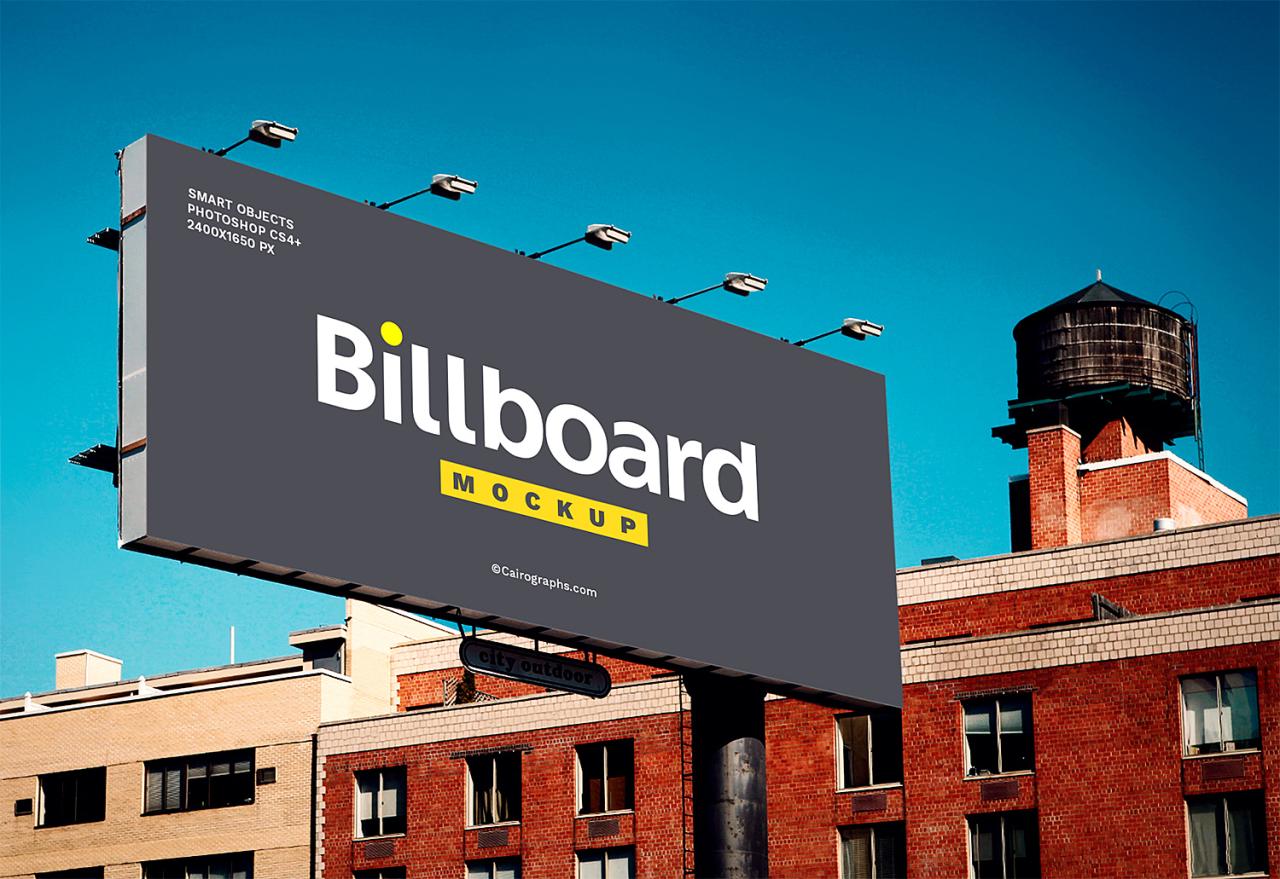The Art of Billboard Mockups: A Comprehensive Guide to Creating Effective Visualizations
In the realm of advertising, billboards stand as towering titans, commanding attention and communicating messages to a vast audience. With the advent of digital technologies, billboard mockups have emerged as an indispensable tool for advertisers, allowing them to visualize and refine their designs before committing to costly production. This comprehensive guide will delve into the intricacies of billboard mockups, empowering you with the knowledge and techniques to create impactful and engaging visualizations.
What is a Billboard Mockup?
A billboard mockup is a digital representation of a billboard design, providing a realistic simulation of how the advertisement will appear in the real world. It enables advertisers to experiment with different design elements, test out various placements, and assess the overall effectiveness of their campaign before investing in production. Mockups are essential for ensuring that the final billboard meets the intended objectives and resonates with the target audience.
The Anatomy of an Effective Billboard Mockup
Creating an effective billboard mockup requires careful attention to several key elements:
1. Resolution and Dimensions: The mockup should have a high resolution to accurately depict the billboard design and ensure clarity when viewed from a distance. The dimensions must match the actual billboard size to maintain scale and proportionality.
2. Background and Environment: The mockup should realistically simulate the environment where the billboard will be placed. Factors such as lighting, surroundings, and weather conditions should be considered to ensure the design blends seamlessly into its intended context.
3. Lighting and Shadows: Natural lighting and shadows play a crucial role in how the billboard will appear in the real world. Mockups should accurately represent these elements to avoid unrealistic or distorted visualizations.
4. Text and Graphics: The text and graphics featured on the billboard should be legible and visually appealing. Typography, colors, and images must be carefully selected to optimize readability and impact.
5. Call to Action: The billboard should include a clear and compelling call to action, prompting the audience to take a specific action, such as visiting a website or making a purchase.
Types of Billboard Mockups
Various types of billboard mockups are available, each serving a specific purpose:
1. Photorealistic Mockups: These mockups provide highly realistic visualizations of the billboard in its intended environment, capturing every detail of the design and its surroundings. They are ideal for final presentations and client approvals.
2. Isometric Mockups: Isometric mockups offer a three-dimensional perspective, allowing advertisers to view the billboard from different angles and assess its spatial relationships with other elements in the scene.
3. Cityscape Mockups: Cityscape mockups place the billboard within a cityscape environment, providing a realistic context for the design and simulating its impact on the urban landscape.
4. Nighttime Mockups: Nighttime mockups showcase the billboard’s appearance under artificial lighting conditions, ensuring that the design is visible and effective even in low-light settings.
Benefits of Using Billboard Mockups
Incorporating billboard mockups into your advertising workflow offers numerous advantages:
1. Visualization and Refinement: Mockups allow advertisers to visualize their designs in a real-world context, facilitating iterative refinement and ensuring that the final product meets expectations.
2. Cost Savings: By creating mockups before production, advertisers can identify and address potential issues early on, avoiding costly reprints or redesigns.
3. Client Approval: Mockups provide tangible representations of the billboard design, enabling clients to provide feedback and approve the final concept before production begins.
4. Market Research: Mockups can be used for market research purposes, allowing advertisers to test different designs with focus groups or online surveys to gauge their effectiveness.
Best Practices for Creating Billboard Mockups
Follow these best practices to create impactful billboard mockups:
1. Define Your Objectives: Before creating a mockup, clearly define the goals of your billboard campaign and the target audience you aim to reach.
2. Conduct Research: Gather information about the billboard location, audience demographics, and industry trends to ensure your design is contextually relevant.
3. Choose High-Quality Images: Use high-resolution images that accurately represent your products or services. Avoid stock photos that lack originality and fail to engage the audience.
4. Use Bold Typography: Billboard text should be concise, impactful, and easily readable from a distance. Use bold fonts and contrasting colors to enhance visibility.
5. Keep it Simple: Avoid cluttering your billboard with excessive text or graphics. Focus on conveying a single, clear message that resonates with the audience.
6. Include a Call to Action: Every billboard should include a clear call to action, such as a website address, phone number, or social media handle.
FAQ: Billboard Mockups
Q: What is the best software for creating billboard mockups?
A: Popular software options include Adobe Photoshop, Illustrator, and Canva. Each software offers unique features and capabilities, so choose the one that best aligns with your design needs.
Q: How can I make my billboard mockups more realistic?
A: Incorporate high-resolution images, accurately simulate lighting and shadows, and pay attention to the surrounding environment to enhance the realism of your mockups.
Q: What are the most common mistakes to avoid when creating billboard mockups?
A: Avoid using low-resolution images, neglecting the call to action, and cluttering your design with excessive text or graphics.
Q: How do I choose the right size and location for my billboard?
A: Consider the visibility, traffic flow, and target audience demographics when selecting the location and size of your billboard. Research industry data and conduct site surveys to optimize your placement.
Q: What are the advantages of using a billboard mockup generator?
A: Billboard mockup generators provide pre-designed templates and easy-to-use interfaces, simplifying the mockup creation process and saving time.
Conclusion
Billboard mockups have revolutionized the way advertisers visualize, refine, and present their billboard designs. By embracing the techniques and best practices outlined in this comprehensive guide, you can create impactful mockups that effectively communicate your messages, captivate your audience, and drive results for your advertising campaigns.
